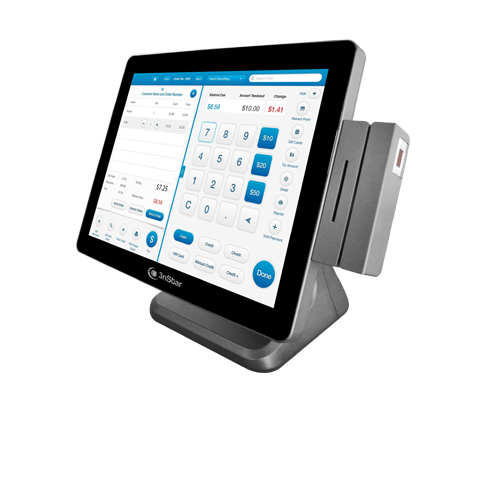Just How POS System Functions: A Comprehensive Overview for Entrepreneur

Understanding the Parts of a POS System

How Sales Transactions Are Processed
When a customer determines to make an acquisition, the sales purchase starts a collection of organized actions within the POS system. The cashier inputs the things being bought, which are scanned through a barcode viewers or manually entered. This activity retrieves item information, including prices and suitable taxes, from the system's database.Next, the customer exists with the complete quantity due. The POS system then refines the settlement, whether with money, credit rating card, or mobile payment approaches (Restaurant POS Software). For digital repayments, the POS firmly connects with payment processors to license and validate the transaction.Once the settlement is verified, the system generates an invoice, which can be published or sent electronically. This receipt serves as receipt for the customer. Lastly, the purchase data is videotaped in the system, ensuring exact sales documents and monetary tracking for the company
Stock Monitoring and Monitoring

Effective inventory administration and tracking are crucial parts of a POS system, as they guarantee that services maintain suitable supply degrees and minimize inconsistencies. A robust POS system enables real-time supply updates, reflecting returns and sales instantly. This enables company proprietors to keep track of supply levels properly, guaranteeing that prominent items are readily offered while stopping overstocking of less prominent products.Additionally, progressed POS systems supply features such as automated stock alerts and reorder tips, streamlining the procurement process. Barcoding and RFID technology boost precision in tracking supply activity, lowering human mistake. Substantial reporting devices give insights into supply turn over prices, aiding services make notified decisions about buying and product offerings. Ultimately, effective stock monitoring through a POS system not only boosts operational effectiveness but also improves client fulfillment by making sure item accessibility.
Evaluating Client Information and Insights
Customer data analysis serves as an effective device for organizations making use of a POS system (Restaurant POS Software). By analyzing and accumulating deal data, companies can discover important insights about customer actions and preferences. This analysis enables them to recognize purchasing patterns, peak shopping times, and preferred items, thereby educating stock decisions and marketing strategies.Additionally, organizations can segment their customer base, enabling individualized marketing initiatives that accommodate details demographics or buying habits. Recognizing customer loyalty patterns additionally helps in developing targeted promotions and benefits programs.The information amassed from a POS system can additionally reveal insights into consumer comments, making it possible for services to make informed choices regarding product offerings and solution renovations. Inevitably, leveraging customer information properly can boost the overall purchasing experience, website foster customer contentment, and drive profits growth
Advantages of Executing a POS System

Frequently Asked Inquiries
What Kinds of Organizations Can Gain From a POS System?
Numerous companies profit from a POS system, consisting of retail shops, dining establishments, beauty salons, and e-commerce platforms. These systems simplify purchases, stock administration, and customer data, improving functional effectiveness and improving consumer experience across diverse industries.
Just how much Does a POS System Generally Expense?
The cost of a POS system usually varies from a few hundred to a number of thousand dollars, depending upon functions, hardware, and software. Businesses should think about recurring costs for transaction, assistance, and upkeep handling when budgeting.
Can I Integrate a POS System With Existing Software Program?
Integrating a POS system with existing software is commonly viable. Many systems supply APIs or integrated compatibility functions, allowing services to enhance operations and enhance performance by linking various software website application applications properly.
What Training Is Required for Staff to Use a POS System?
Training for staff to utilize a POS system commonly includes understanding software program capabilities, refining transactions, taking care of stock, and handling consumer communications. Practical demonstrations and hands-on method sessions boost efficiency and self-confidence in operation the system properly.
What Happens if the Net Decreases While Using a POS System?
If the internet goes down during POS system use, transactions might be interrupted. Lots of systems offer offline capacities, allowing standard operations to proceed, yet full capability, including real-time inventory updates, will be click here restricted. A Point of Sale (POS) system is composed of numerous vital parts that function with each other to handle and assist in purchases business operations. Reliable supply monitoring and tracking are essential components of a POS system, as they assure that services keep excellent stock levels and decrease discrepancies. Client data analysis serves as a powerful device for businesses using a POS system. Understanding customer loyalty patterns likewise aids in developing targeted incentives and promos programs.The information amassed from a POS system can also disclose understandings right into customer comments, enabling organizations to make educated choices concerning item offerings and service enhancements. Executing a POS system provides countless benefits that can greatly improve business operations.